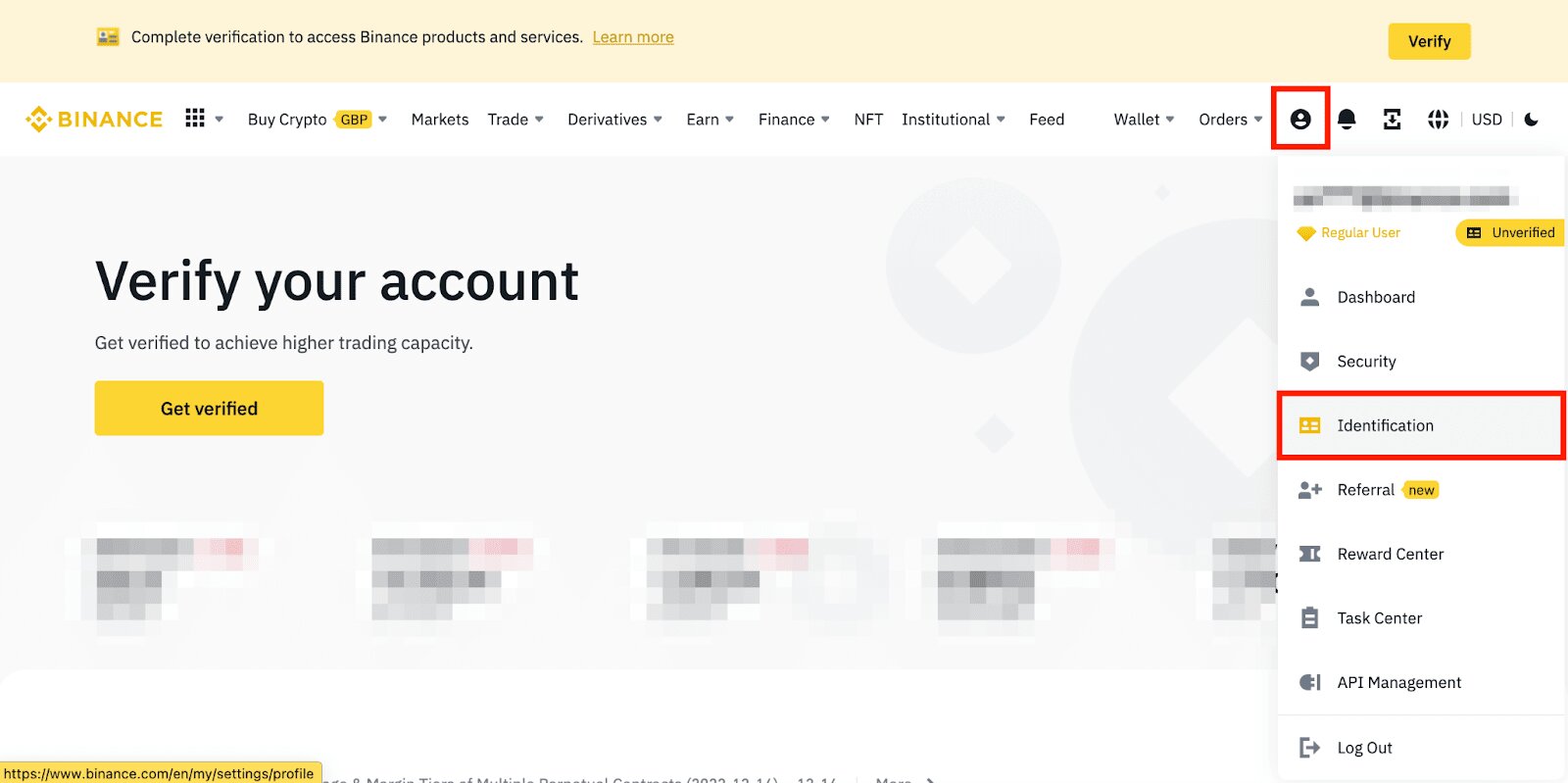Introduction
When it comes to the world of banking, there are a myriad of acronyms and terms that one needs to be familiar with. One such term is PEP, which stands for Politically Exposed Persons. PEPs are individuals who hold prominent positions in government, politics, the military, or international organizations. These individuals, by virtue of their positions, have the potential to abuse their power for personal gain or engage in corrupt practices.
Understanding the concept of PEPs and their significance in the banking industry is crucial, as it directly impacts risk management and compliance measures implemented by financial institutions. Banks and other financial institutions have a responsibility to identify and manage the risks associated with PEPs to protect themselves from reputational damage, regulatory penalties, and financial losses.
This article aims to delve into the world of PEPs in banking, shedding light on their definition, relevance, and the risk associated with managing them. It will explore the regulatory measures in place to mitigate these risks, and how technology plays a vital role in effectively managing PEPs.
So, let’s embark on this journey to unravel the significance of PEPs in banking and understand why they warrant special attention from financial institutions.
The Definition of PEP
In the world of banking, a Politically Exposed Person (PEP) refers to an individual who holds a prominent position in government or holds a high-ranking position in a state-owned enterprise. PEPs can also include individuals with close connections to those in power, such as family members or business associates. The exact definition may vary from country to country and is typically outlined in local legislation and regulatory frameworks.
PEPs are considered to be at a higher risk of involvement in bribery, corruption, money laundering, or other illicit activities due to their influential positions and access to substantial resources. Financial institutions need to exercise caution when dealing with PEPs to ensure compliance with anti-money laundering (AML) and counter-terrorism financing (CTF) regulations.
PEPs can be categorized into two main types: domestic and foreign. Domestic PEPs are individuals who hold prominent positions within their own country, such as heads of state, government officials, and high-ranking military officers. Foreign PEPs, on the other hand, are individuals who hold prominent positions in foreign governments or international organizations.
It’s important to note that the definition of PEPs extends beyond individuals currently holding public positions. It can also encompass individuals who have held prominent positions in the past, as there may still be a potential risk associated with their financial transactions.
Financial institutions are required to have processes and procedures in place to identify and monitor PEPs to mitigate the risks associated with them. This involves establishing appropriate due diligence measures and implementing enhanced monitoring for higher-risk customers.
In the next section, we will explore why PEPs are relevant in banking and why financial institutions need to be proactive in managing the risks associated with these individuals.
Why PEP is Relevant in Banking
PEPs hold significant power and influence due to their positions in government or international organizations. This makes them particularly relevant in the banking industry. Financial institutions have a responsibility to ensure the legitimacy of the funds they handle and mitigate the risk of being involved in illicit activities. Managing PEPs is part of their risk management strategy.
There are several reasons why PEPs are considered relevant in banking:
- Risk of corruption: PEPs have the potential to exploit their positions for personal gain or engage in corrupt practices. Financial institutions need to be vigilant in identifying and monitoring PEPs to mitigate the risk of facilitating money laundering, bribery, or other illicit activities.
- Reputational risk: Being associated with a PEP involved in corruption or illegal activities can severely damage a bank’s reputation. This can lead to a loss of customer trust, impact financial performance, and result in regulatory scrutiny. Financial institutions must manage their reputation by implementing robust compliance measures when dealing with PEPs.
- Compliance with regulations: Financial institutions operate under strict regulatory frameworks that require them to implement measures to prevent money laundering and terrorism financing. Identifying and managing PEPs is an essential part of these obligations, as PEPs are considered high-risk customers.
- International standards and cooperation: The International Monetary Fund (IMF) and the Financial Action Task Force (FATF) have established international standards and guidelines for managing the risks associated with PEPs. Banks operating globally need to adhere to these standards and collaborate with international counterparts to combat financial crimes.
Financial institutions need to establish enhanced due diligence procedures to identify PEPs and assess the risks associated with their transactions. This includes scrutinizing the source of funds, the purpose of transactions, and maintaining ongoing monitoring of the customer relationship.
In the next section, we will explore the risks involved in managing PEPs and the measures implemented by regulatory bodies to mitigate these risks.
The Risk of Managing PEPs
Managing Politically Exposed Persons (PEPs) presents certain risks and challenges for financial institutions. Due to their prominent positions and potential influence, PEPs carry a higher risk of involvement in illicit activities. Here are some of the key risks involved in managing PEPs:
- Money laundering: PEPs may attempt to use the financial system to launder money obtained through corrupt activities. Financial institutions must diligently assess the source of funds and conduct thorough due diligence to prevent their involvement in money laundering schemes.
- Bribery and corruption: PEPs are more susceptible to engaging in bribery and corrupt practices due to their access to power and resources. Banks must implement measures to detect and prevent any potential involvement with such activities.
- Reputational risk: Being associated with a PEP involved in illegal activities can seriously damage a bank’s reputation. Negative publicity and the loss of customer trust can have far-reaching consequences on a financial institution’s profitability and sustainability.
- Regulatory compliance: Financial institutions must comply with AML and CTF regulations to prevent facilitating financial crimes. Failing to identify or adequately manage the risks associated with PEPs can result in severe regulatory penalties and legal consequences.
- Complex ownership structures: PEPs may make use of complex corporate structures or offshore entities to obscure their ownership interests and illicit activities. This poses a challenge for banks to conduct thorough due diligence and gain transparency into the ultimate beneficial ownership of funds.
- International challenges: PEPs can have international connections and engage in cross-border transactions, making it difficult for banks to track and monitor their activities. Cooperation and information sharing among financial institutions and regulatory bodies are essential to effectively manage these risks.
Due to these risks, financial institutions need to implement robust compliance programs and conduct enhanced due diligence when dealing with PEPs. This includes ongoing monitoring of customer transactions, periodic assessments of risk levels, and training employees to identify and report suspicious activities.
In the next section, we will explore the regulatory measures and guidelines put in place to mitigate the risks associated with PEPs.
Regulatory Measures for PEPs
Recognizing the heightened risks associated with Politically Exposed Persons (PEPs), regulatory bodies around the world have established measures and guidelines to enhance the oversight and management of PEP-related risks. These regulations aim to ensure that financial institutions have robust systems in place to prevent money laundering, corruption, and other illicit activities. Here are some key regulatory measures for managing PEPs:
- Know Your Customer (KYC) requirements: Financial institutions are required to perform thorough due diligence on their customers, including PEPs, to verify their identity, assess their risk profile, and understand the nature of their business.
- Enhanced Due Diligence (EDD): When dealing with PEPs, financial institutions must conduct enhanced due diligence, which involves obtaining additional information about the customer and the nature of their transactions. This includes understanding the source of funds, the purpose of transactions, and assessing the potential risks involved.
- Ongoing monitoring: Financial institutions are expected to continuously monitor the activities of PEPs to detect any suspicious transactions or changes in risk profiles. This includes regular reviews and assessments to ensure compliance with regulations and to identify any potential red flags.
- Risk-based approach: Regulatory frameworks emphasize the importance of adopting a risk-based approach to managing PEPs. This involves assessing the level of risk associated with individual customers based on factors such as their position, country of origin, and the nature of their transactions.
- Record-keeping: Financial institutions are required to maintain detailed records of their interactions and transactions with PEPs. These records serve as evidence of compliance with regulatory requirements and facilitate audits or investigations, if necessary.
- Cooperation and information sharing: Regulatory bodies encourage collaboration and information sharing among financial institutions, both domestically and internationally, to effectively manage the risks associated with PEPs. Sharing intelligence and best practices can strengthen the overall system’s ability to detect and prevent financial crimes.
Compliance with these regulatory measures is essential for financial institutions to mitigate the risks associated with PEPs and ensure the integrity of the financial system. Failure to comply can result in severe penalties, reputational damage, and legal consequences.
In the next section, we will discuss the importance of conducting enhanced due diligence on PEPs and the steps involved in the process.
Conducting Enhanced Due Diligence on PEPs
Given the higher risks associated with Politically Exposed Persons (PEPs), financial institutions are required to conduct enhanced due diligence (EDD) when dealing with such individuals. Enhanced due diligence goes beyond the standard Know Your Customer (KYC) requirements and requires a more comprehensive and rigorous approach to assess the risks involved. Here are the steps involved in conducting enhanced due diligence on PEPs:
- Identification: Financial institutions need to have processes in place to identify PEPs accurately. This can include reviewing public sources such as official government websites, political party registers, and international sanction lists.
- Risk assessment: PEPs carry varying levels of risk, depending on factors such as their position, country of origin, and the nature of their transactions. Banks need to assess and document the risk associated with each PEP to determine the appropriate level of due diligence required.
- Source of funds verification: Financial institutions must verify the source of funds provided by PEPs to ensure they are legitimate. This involves obtaining supporting documentation, such as bank statements, tax records, and business ownership documents, to validate the origin of the funds.
- Purpose of transactions: Understanding the purpose of transactions conducted by PEPs is crucial for detecting any suspicious activities. Banks need to obtain detailed information about the nature of the transactions and assess whether they align with the PEP’s known sources of income and legitimate activities.
- Politically exposed connections: Financial institutions should also consider any connections or relationships that PEPs may have with other individuals who are also politically exposed or involved in high-risk activities. This includes family members, close associates, or business partners.
- Ongoing monitoring: Once a customer is identified as a PEP, financial institutions must implement enhanced ongoing monitoring to detect any changes in the customer’s risk profile, transactions, or sources of funds. Regular reviews and assessments are essential to stay updated on any potential red flags.
Conducting enhanced due diligence on PEPs requires a combination of human expertise and advanced technology solutions. Banks need to invest in robust systems and tools that can efficiently collect, analyze, and monitor relevant information to ensure compliance with regulatory requirements.
In the next section, we will explore the role of technology in managing PEPs and how it can enhance the effectiveness and efficiency of compliance processes.
The Role of Technology in Managing PEPs
Managing Politically Exposed Persons (PEPs) presents complex challenges for financial institutions. However, advancements in technology have provided innovative solutions to enhance the effectiveness and efficiency of compliance processes. Here’s a look at the role of technology in managing PEPs:
- Automated screening tools: Technology enables financial institutions to implement automated screening tools that can quickly and accurately identify PEPs. These tools can leverage various data sources, such as public registers, news articles, and social media platforms, to flag potential matches and streamline the identification process.
- Data analytics: Big data analytics allows financial institutions to analyze vast amounts of data and identify patterns or anomalies that may indicate suspicious activities related to PEPs. By leveraging artificial intelligence and machine learning algorithms, banks can more effectively detect potential risks and prioritize their efforts.
- Transaction monitoring systems: Technology solutions offer advanced transaction monitoring systems that can detect and analyze transactions involving PEPs in real-time. These systems can apply predefined risk-based rules, anomaly detection algorithms, and behavioral patterns analysis to identify potentially illicit activities.
- Customer due diligence platforms: Technology platforms designed specifically for customer due diligence (CDD) streamline the process of gathering and verifying customer information. These platforms can automate data collection, document verification, and risk assessment, making it easier for banks to perform enhanced due diligence on PEPs efficiently.
- Regulatory compliance tools: Financial institutions can leverage technology to implement regulatory compliance tools that provide ongoing monitoring, record-keeping, and reporting capabilities. These tools ensure that banks stay up to date with changing regulations and can demonstrate compliance during audits and regulatory reviews.
- Artificial intelligence and natural language processing: Artificial intelligence and natural language processing technologies can be applied to automate the analysis of unstructured data sources, such as news articles and social media feeds, to identify any potential risks or connections to PEPs. This helps banks stay updated on relevant information and detect potential red flags.
By integrating technology solutions into their compliance processes, financial institutions can streamline the identification, monitoring, and reporting of PEPs. This not only improves the effectiveness of risk management but also enhances operational efficiency and reduces the burden on compliance teams.
However, it’s important to note that while technology plays a crucial role in managing PEPs, human expertise and judgment are still essential in interpreting and validating the information provided by these technological tools.
In the next section, we will conclude our exploration of PEPs in banking and highlight the key takeaways from this article.
Conclusion
Politically Exposed Persons (PEPs) pose unique risks to the banking industry due to their influential positions and potential involvement in illicit activities. Financial institutions have a responsibility to implement robust compliance measures to manage these risks effectively.
In this article, we explored the definition of PEPs and why they are relevant in banking. We discussed the risks associated with managing PEPs, including money laundering, corruption, and reputational damage. Regulatory measures and guidelines were examined, emphasizing the importance of enhanced due diligence, ongoing monitoring, and collaboration among financial institutions.
Technology plays a vital role in managing PEPs, providing automated screening tools, data analytics, transaction monitoring systems, and regulatory compliance tools. These technological advancements enhance the identification, monitoring, and reporting processes, improving the overall effectiveness and efficiency of compliance efforts.
It is crucial for financial institutions to strike a balance between compliance requirements and customer experience. While managing PEPs involves implementing stringent measures, it is essential to ensure smooth and seamless customer interactions.
In conclusion, effectively managing PEPs is an ongoing challenge for financial institutions. By staying informed about regulatory requirements, leveraging advanced technologies, and maintaining a proactive approach to risk management, banks can protect themselves from financial, reputational, and regulatory risks associated with PEPs.

























